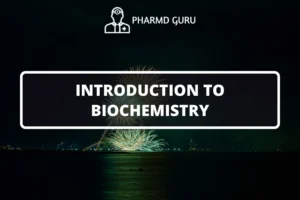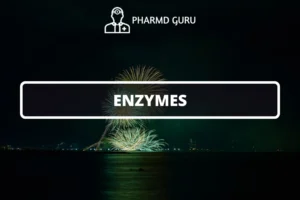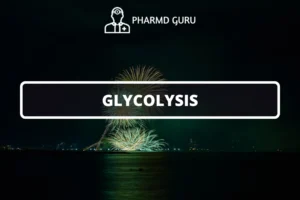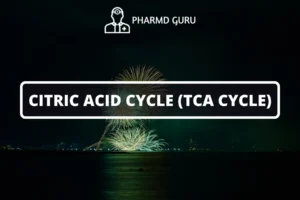DNA is a remarkable molecule that carries the genetic instructions necessary for the development, functioning, and survival of all living organisms. However, DNA is not immune to damage caused by various sources, such as chemical agents, radiation, and errors during replication. To maintain the integrity of the genetic material, cells have evolved sophisticated DNA repair mechanisms that can identify and correct DNA damage. In this article, we will explore the fascinating world of DNA repair, including different types of DNA damage and the repair mechanisms that safeguard the blueprint of life.
SCROLL DOWN TO THE BOTTOM OF THE PAGE FOR ACTUAL NOTES
Table of Contents
- Introduction to DNA Repair
- Types of DNA Damage
- 2.1 Base Damage
- 2.2 DNA Strand Breaks
- 2.3 Bulky DNA Lesions
- DNA Repair Mechanisms
- 3.1 Mismatch Repair
- 3.2 Base Excision Repair
- 3.3 Nucleotide Excision Repair
- 3.4 Homologous Recombination
- 3.5 Non-homologous End Joining
- Importance of DNA Repair
1. Introduction to DNA Repair
DNA repair is a collective term for a range of cellular mechanisms that correct DNA damage and maintain the integrity of the genetic material. DNA damage can occur due to endogenous factors, such as metabolic byproducts, as well as exogenous sources, including environmental agents like ultraviolet radiation and mutagenic chemicals. DNA repair mechanisms are crucial for the prevention of mutations, genome instability, and the development of diseases like cancer.
2. Types of DNA Damage
DNA damage can manifest in various forms, each requiring specific repair mechanisms to restore the original DNA sequence. Some common types of DNA damage include:
2.1 Base Damage
Base damage refers to modifications or chemical alterations of individual nucleotides within the DNA molecule. These alterations can lead to changes in the base-pairing properties of DNA, affecting accurate replication and transcription. Examples of base damage include the formation of thymine dimers due to UV radiation exposure or the deamination of cytosine to uracil.
2.2 DNA Strand Breaks
DNA strand breaks occur when the sugar-phosphate backbone of the DNA molecule is severed. Strand breaks can be single-stranded breaks (SSBs) or double-stranded breaks (DSBs), depending on whether one or both DNA strands are affected. Strand breaks can result from exposure to ionizing radiation, reactive oxygen species, or genotoxic chemicals.
2.3 Bulky DNA Lesions
Bulky DNA lesions involve the addition of large chemical groups to the DNA molecule, altering its structure and hindering replication and transcription. Examples of bulky DNA lesions include thymine dimers and DNA adducts formed by certain chemical carcinogens.
3. DNA Repair Mechanisms
Cells employ several DNA repair mechanisms, each tailored to address specific types of DNA damage. Here are some of the key DNA repair mechanisms:
3.1 Mismatch Repair
Mismatch repair corrects errors that occur during DNA replication, ensuring the accuracy of the newly synthesized DNA strand. Mismatch repair enzymes recognize and remove mispaired nucleotides, replacing them with the correct ones based on the template strand.
3.2 Base Excision Repair
Base excision repair primarily deals with small, non-bulky DNA lesions, such as damaged bases or single nucleotide modifications. Specific enzymes recognize and remove the damaged base, followed by the insertion of the correct base through DNA polymerase and ligation by DNA ligase.
3.3 Nucleotide Excision Repair
Nucleotide excision repair repairs bulky DNA lesions, such as those induced by UV radiation or certain chemicals. This mechanism involves the removal of a stretch of nucleotides containing the damaged site, followed by DNA synthesis and ligation to restore the original DNA sequence.
3.4 Homologous Recombination
Homologous recombination repairs double-strand breaks, where both strands of the DNA molecule are severed. The broken DNA ends are processed, and a complementary sequence from the sister chromatid or homologous chromosome is used as a template to restore the original DNA sequence.
3.5 Non-homologous End Joining
Non-homologous end joining repairs double-strand breaks by directly ligating the broken DNA ends. This mechanism does not require a homologous template and can result in the loss or insertion of nucleotides at the repair site, potentially leading to mutations.
4. Importance of DNA Repair
DNA repair mechanisms are essential for the maintenance of genomic stability and the prevention of mutations. These mechanisms ensure that DNA damage is promptly detected and repaired, reducing the risk of errors during replication or transcription that could lead to genetic disorders or the development of cancer. DNA repair is vital for the overall health and survival of living organisms.
ACTUAL NOTES




